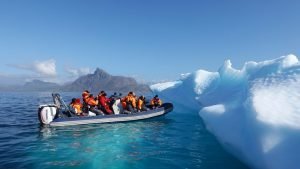Remote sensing technique has become one of the vital tools in mapping and protecting large and remote areas. In the biodiversity conservation field, remote sensing has proved to be effective, and thus it is used in various ways. It plays an integral role in conserving natural habitat and natural features. Therefore, in this article, we shall discuss some of the applications and benefits that come along with this technique.
Applications
Some of the applications of this technique in Biodiversity conservation include:
1. Data collection

Remote sensing is a useful tool in data collection. To ease the process of biodiversity conservation, remote sensors are used to take and record data of the environment, which is further used in analysis and surveys. Through this data, the environment is conserved, and natural resources are used sustainably.
2. Generating maps
Remote sensors are airborne components, and therefore they use in generating maps of terrestrial ecosystems. These maps are used to show forested or non-forested areas and other physical features. The resulting maps may be used in ensuring these areas converse.
3. Protecting forested areas
Biodiversity can be conserved by preventing and protecting cutting down of trees in forested areas. It is tricky to monitor the thick parts of the forests from the earth’s surface, and therefore remote sensing technique comes in. Since this technique is remotely used, it can capture images from the sky and thus can be used to protect the cutting of trees and helps in forest conservation.
4. Monitoring natural resources sites

In order to conserve biodiversity, natural resources should be utilized efficiently. To achieve this, remote sensors are used to monitor sites that contain resources and regulate and control events of over-exploitation of resources.
5. Animal conservation
Both wild and domestic animals are components of biodiversity. Thus they need to be conserved. In the case of game parks, remote sensors are useful tools, they are used to monitor all the operations taking place within the park, and this can be used to curb poaching and hence to minimize events of animal killings.
6. Change detention
Remote sensors have wider coverage and have the ability to detect environmental changes. Therefore, they play a major role in ecosystem and species services. Remote sensor data is used to plan for the expected change, and this facilitates timely response.
7. Environmental conservation

For biodiversity to be conserved, the environment should be conserved. Remote sensors help to conserve the environment; they help in assessing the quality of air and in minimizing pollution that has a negative impact on the environment. For example, Remote sensors measure the amount of aerosol and sprays on the air, important information that is used to curb air pollution.
8. Land-cover classification and protection
Some vegetation is valuable, however regular assessment of these plants may be difficult, thanks to remote sensing technique for easing the process. The vegetations are monitored and protected from the sky as the remote sensor are airborne components. Additionally, data from the remote sensor is used in classifying plants according to their families.


